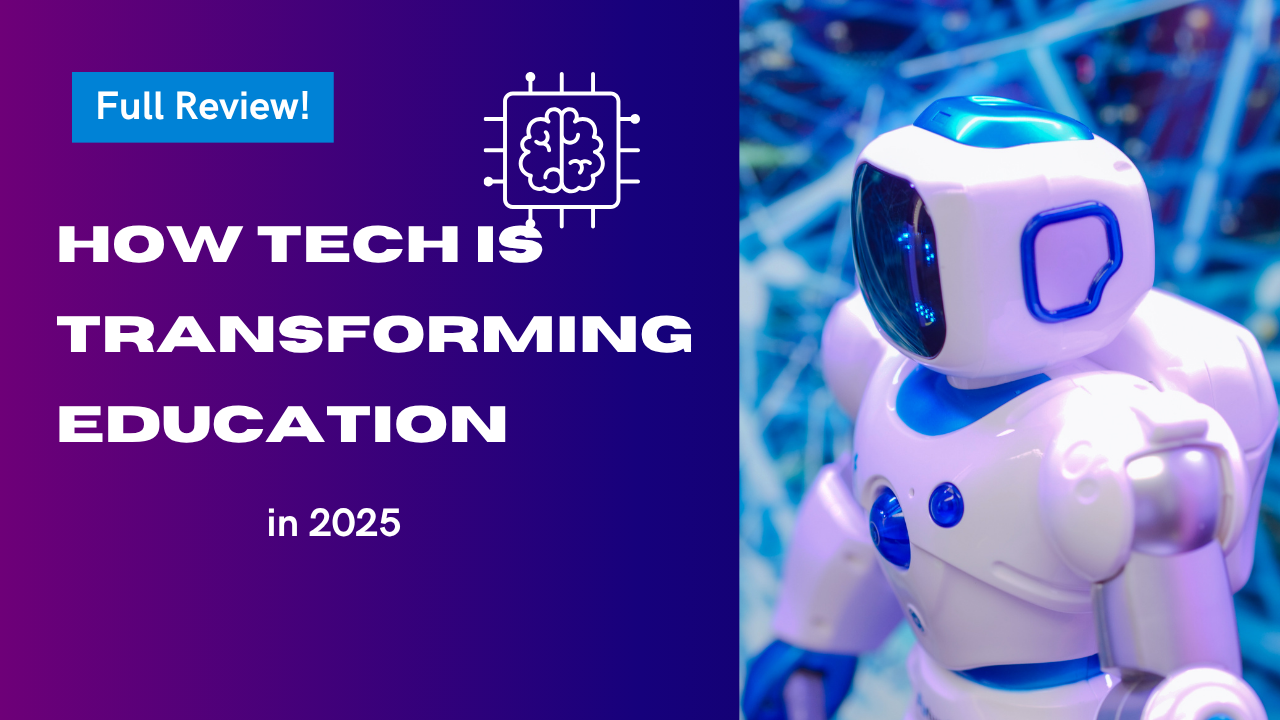Technology has changed the world of education a lot in the last few years. The traditional classroom paradigm is changing into a learning experience that is more personalised, accessible, and interesting by 2025. Technology is not just making it easier for pupils to learn; it’s also changing the very idea of what education is.
In this post, we’ll talk about how technology is changing education in 2025, the main new ideas that are making it feasible, and the problems and chances that come with this digital transformation.
AI Makes Learning More Personal
Artificial intelligence (AI) is one of the most powerful things in education right now. They can provide them personalised courses and feedback right away.
The main benefits are:
Content that is made to fit the skills and limitations of each student
Feedback and analysis of performance right away
Learning routes that are unique to each student Khan Academy and Duolingo are two examples of platforms that already use AI to make learning more personal.
More advanced technology are coming out in 2025 that will assist teachers find pupils who are having trouble early on and provide them the aid they need.
Learning using virtual and augmented reality
Augmented Reality (AR) and Virtual Reality (VR) are making education come to life in ways that were once thought impossible. Students can now learn about ancient cultures, do virtual science projects, or even walk through the human circulatory system, all from their homes or classrooms.
For example: AR overlays in biology classes that show 3D models of cells and living things VR headsets for pretending to do lab activities or explore historical sites Training environments that let you practise medical or technical skills These tools help students remember what they study better and make it more participatory, especially when it comes to hard subjects like physics, math, and history.
Educational approaches that are either remote or a combo of the two
The epidemic caused a movement around the world towards online learning, which set the stage for the hybrid education approach we see today. In 2025, a lot of schools and colleges now offer both in-person and online classes. This gives students more options and makes it easier for them to get the help they need.
The pros of hybrid learning are: Students with various requirements or time restrictions might be flexible. Access to teachers from all over the world and online certificates. Virtual libraries and lessons that you can listen to whenever you desire. Hybrid learning makes education more open to everyone, whether it’s rural youngsters getting a good education or working adults going to virtual MBA programs.
Learning apps and EdTech platforms
A new wave of educational technology (EdTech) platforms is changing how students learn, work together, and keep track of their progress. Apps like Google Classroom, Microsoft Teams, and new AI-based platforms make it easy to do homework, take tests, and talk to each other all in one place.
Some important qualities are:
Smart reminders for tasks and scheduling
Quizzes and progress trackers that are fun to play
These platforms enable students keep track of their work and assist teachers keep an eye on and manage class performance.
Interactive content and games
Adding game-like features to learning, or “gamification,” is turning out to be a strong motivator. Tech tools make learning entertaining, competitive, and interesting by adding points, badges, challenges, and incentives.
Some examples of gamified learning are:
Language study apps that have daily streaks and leaderboards
Math websites where kids ‘level up’ by completing issues
Games that teach kids how to think critically and solve problems
Gamification isn’t just a trend in 2025; it’s a tried-and-true way to get more people involved and keep them coming back.
Chatbots and AI-Powered Tutors
Along with teachers and guardian, artificial intelligence instructors are also helping students all the time. These smart bots can answer enquiries, explain things, and even grade homework.
Advantages of AI tutors:
Help right away, even while class isn’t in session Less stress on teachers for doing the same things over and over Learning help that can be scaled up for big groups of pupils For instance, an AI math bot can help a student solve algebra problems by going through them step by step and changing the explanations based on how the student responds.
Insights and predictions based on data
Now, predictive analytics can tell schools how well students will do, which helps them step in early and stop students from dropping out.
How analytics are used in schools:
Keeping track of how many people are coming and how interested they are
Finding patterns in how students are doing
Making changes to the curriculum based on how students learn
These insights give teachers the tools they need to make proactive, evidence-based choices that lead to better learning outcomes.
Things to think about
Even with these new ideas, there are still problems to solve:
Digital divide: Not all students can get to devices or the internet equally. People are worried about learners confidentiality and data protection when data is used in learning. T
Tech fatigue: If you don’t balance your screen time well, you could get burned out or lose interest. To make systems that are open to everyone and last, teachers, software developers, and legislators need to work together to solve these problems.
Conclusion:
In 2025, technology is altering education swiftly, making classrooms more individualised, adaptive, and collaborative than they have ever been. Technology is making every part of teaching and learning better, from AI-powered tutors and immersive VR lectures to real-time data and gamified learning. As we move forward, using these technologies will not only make education better now, but it will also get the next generation ready for the problems and opportunities that lie ahead.

